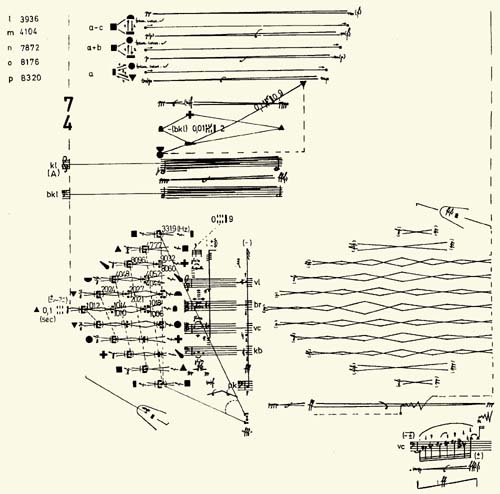| |
JOURNALIST: So, your lessons at the academy of music in Cologne took place in a cafe in
the Aachener Street, am I right?
PETER HUEBNER: Not entirely. At the same time, I had also enrolled
with Herbert Eimert who had set up and ran the electronic studio. Participation
in his electronic studio required a completed study of composition –
he explained to me.
I told him that I did not have such qualifications, but that I could show
him a score from a large opera, in which I had realised the principles of
his serial musical theory.
So, I left the score with him. After a week he returned it to me, informing
me that I could start my work in his studio and realise the electronic part
of my opera.
And so every week I met up with the technical director of this studio of the
music academy, Gerhard Rautenbach, and together with him realised the electronic
music for the opera’s Diogenes-Vision. He was a sensitive man, not at
all a typical technocrat, and as such an excellent partner for realising this
work.
For Prof. Dr. Herbert Eimert this electronic work was a great success for
the studio. He asked me to let him and/or the music academy have the score
(approx. 4 m wide and 1.5 m high) and had it hung on the large wall of the
studio – where it could not be overlooked by anybody entering.
And year in, year out, he proudly showed everybody who came from the home
country or abroad this score.
To me he never uttered a word about this – anyway, he wasn’t a man
to talk big, but in my opinion he was a unique thinker.
And the entire avant-garde has so far benefited more from him than they are
actually aware of.
He is not only the founder of the first electronic studio in the world (at
the “Westdeutsche Rundfunk”, the West German Radio) and the father
of electronic music, but, besides Arnold Schönberg and somebody else,
he is also one of the three founders of modern serial compositional technique
and above all, the person to complete this musical theory. |
|
